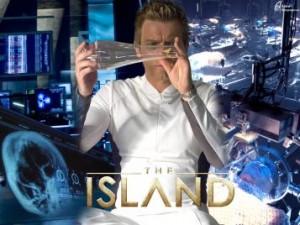In “Human Genetic Enhancements” (2012), Bostrom lays out some of the arguments in favor of genetic enhancements. While he explicitly states that his arguments draw from the movement known as transhumanism, he does not respond to criticisms of transhumanism itself as much as he does to arguments against genetic enhancements. In this post, I will outline some background information on transhumanism and an interesting debate between Francis Fukuyama and Bostrom.
According to Max More, a prominent supporter of transhumanism, it is a group of ideas that “refuses to accept traditional human limitations such as death, disease and other biological frailties” (from McNamee & Edwards 2006). It does not restrict itself to genetic engineering, but also space colonization, artificial intelligence, etc. (Bostrom gives some interesting information in a few YouTube interviews, such as this one). It can take one of two forms: strong transhumanism or weak transhumanism. Both strong and weak transhumanists advocate using technology to enhance humanity (e.g. in appearance, intelligence, lifespan). Strong transhumanists differ in arguing that we should use technology to become a new species (McNamee & Edwards 2006).
Because of the radical nature of its stronger supporters, transhumanism seems to have a rather dystopian connotation. But the basic aim, to improve the human condition through technology, is not so far-fetched. After all, improving technology is an important part of public health. This is salient if one considers examples like sewage systems and clean water supplies (McNamee & Edwards 2006). By and large, though, the term ‘transhumanism’ is more concerned with higher-level technology like genetic engineering (2006; Bostrom 2012).
Criticism of transhumanism has been vociferous. In a 2004 Foreign Policy report, eight public intellectuals wrote on what they considered “the world’s most dangerous ideas” that will have to be confronted in the future. Francis Fukuyama, a political scientist, wrote his article on transhumanism. He gives two main arguments against transhumanism. The first is that our political right to equality presupposes that there is a fundamental human essence that transcends sex, class, or race. That is to say, all members of the human species are afforded equality. In a sense, the post-humans that transhumanists advocate for throw a wrench in our conception of equality by changing the fundamental human essence (cf. Bostrom 2012 112-113).
The second argument against transhumanism is that it seems to gloss over the two-sided nature of human characteristics. “Our good characteristics” Fukuyama says, “are intimately connected to our bad ones” (2004). What is seen as a negative trait in one context could be a positive one in another. For instance, we may consider violence and aggression a negative characteristic in itself, but it is useful when we need to defend ourselves. The biggest risk, he says, is that we do not really know how intricately these characteristics are intertwined. Transhumanists take it upon themselves to determine what is good or bad in a human. We do not know the results of meddling with our biology in such a way (Fukuyama goes so far as to say that we cannot know).
In response to Fukuyama’s article, Bostrom (2004) argues that the Fukuyama’s argument is flawed. He argues that evolutionary biology has revealed that there can be no distinctive “human essence”, because the human gene pool is not fixed. Even if there were a human essence, he argues that this is not an argument for post-humans contradicting the basis to equal rights. On his view, transhumanism does not advocate for creating beings that lack moral agency (or somehow transcend it), which he considers more fundamental to our rights than our essence.
Works Cited
Fukuyama, Francis. 2004. “The World’s Most Dangerous Ideas: Transhumanism” Foreign Policy 144: 42-43.
Bostrom, Nick. 2004. “Transhumanism: The World’s Most Dangerous Idea?” Foreign Policy.
Bostrom, Nick. 2012. “Human Genetic Enhancements: A Transhumanist Perspective” in Arguing About Bioethics, ed. Stephen Holland. 105-115. New York: Routledge.
McNamee, S.D. and M.J. Edwards. 2006. “Transhumanism, Medical Technology and Slippery Slopes”, Journal of Medical Ethics 32.9: 513-518.







